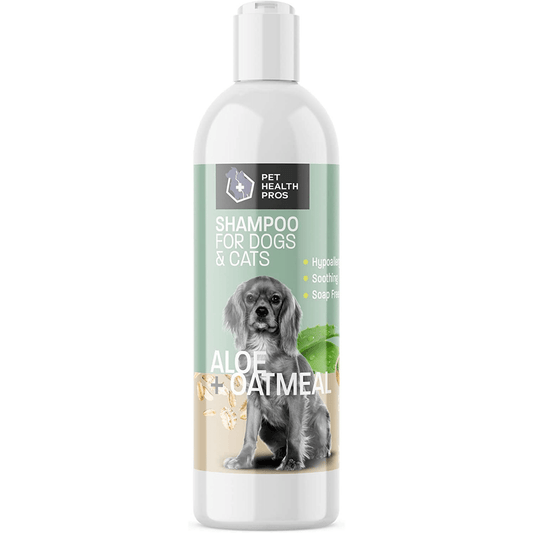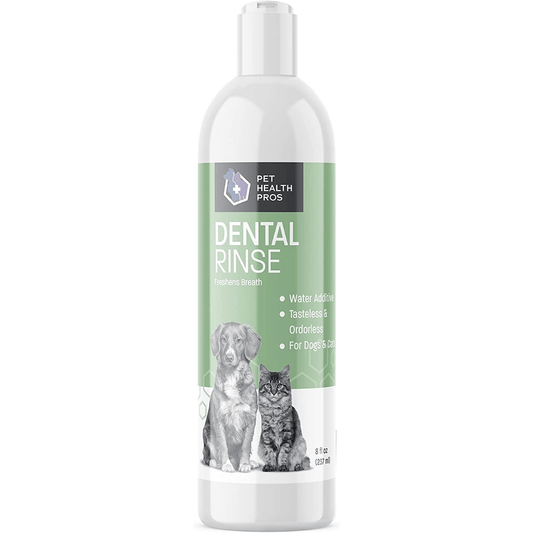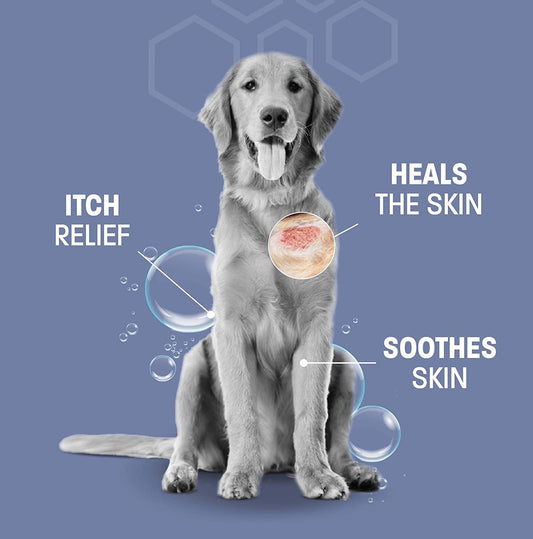Ear yeast infections, medically known as otitis externa, are a common and uncomfortable problem for many dogs. These infections are caused by the overgrowth of yeast in the ear canal, which can lead to a range of symptoms and discomfort for our canine companions. Understanding the causes, recognizing the symptoms, and knowing the appropriate treatment options are crucial for dog owners to effectively manage this condition. This article delves into the intricacies of ear yeast infections in dogs, offering insight into how to support your pet's recovery and maintain their ear health.
Key Takeaways
- Ear yeast infections in dogs, or otitis externa, are typically caused by the yeast species Malassezia pachydermatis and can be exacerbated by various risk factors such as moisture, allergies, and ear anatomy.
- Symptoms of canine ear yeast infections include redness, swelling, discharge, odor, and behavioral changes like head shaking or scratching, which necessitate prompt attention and care.
- Diagnosis of ear yeast infections involves a thorough veterinary examination, sample collection for analysis, and differentiation from other ear conditions to ensure accurate treatment.
- Treatment strategies range from medicinal options prescribed by veterinarians to home remedies and preventive measures, with severe cases requiring professional care.
- Supporting your dog's recovery includes nutritional considerations and the use of high-quality pet health products, like those from Pet Health Pros, for long-term management of ear health.
Understanding Ear Yeast Infections in Dogs
Defining Otitis Externa
Otitis externa is an inflammation of the outer ear canal, which is often caused by a yeast infection. This condition is particularly common in dogs due to their ear anatomy, which can retain moisture and debris. The primary yeast species responsible for these infections is Malassezia pachydermatis.
-
Risk Factors Include:
- Humid environments
- Allergies
- Ear shape and size
- Immune system deficiencies
Early detection and treatment are crucial to prevent the infection from spreading to the middle or inner ear, which can lead to more serious complications.
Treatment typically involves cleaning the ear canal and administering antifungal medications. It's important for dog owners to be vigilant about their pets' ear health and to seek veterinary care if an infection is suspected.
Common Yeast Species Involved
In the context of ear yeast infections in dogs, the most prevalent culprit is a type of skin yeast known as Malassezia. This yeast is naturally present on the skin of dogs and becomes problematic when it overgrows, leading to an infection. Malassezia is not the only yeast species that can cause ear infections, but it is by far the most common.
Other yeast species that may occasionally be involved include Candida, which is less common but can still lead to significant discomfort and health issues for your dog. It's important to understand that while these yeasts are part of the normal flora of a dog's ear, certain conditions can trigger their overgrowth.
The presence of these yeasts in a dog's ear is normal, but when the balance is disrupted, an infection can occur.
Identifying the specific yeast species involved is crucial for effective treatment, as different yeasts may respond to different medications. A veterinarian will typically take a sample from the dog's ear to determine the exact cause of the infection.
Risk Factors for Developing Infections
Understanding the risk factors for ear yeast infections in dogs is crucial for prevention and early intervention. Dog ear yeast infections are caused by factors like moisture, allergies, ear anatomy, and weakened immune systems. Prevention includes regular cleaning, antifungal treatments, dietary changes, and vet visits for effective management.
Certain breeds with non-erect ears, such as Cocker Spaniels and Basset Hounds, are more prone to infections due to their ear structure which can trap moisture. Dogs with allergies may also experience more frequent yeast infections as their immune response can alter the ear environment, making it more hospitable for yeast growth.
Maintaining a dry and clean ear environment is essential to prevent yeast overgrowth. Regular ear examinations can help identify issues early, before they escalate into more serious infections.
Lifestyle factors such as swimming can increase the risk of ear infections due to the additional moisture. Dogs with endocrine disorders, like hypothyroidism, or those on medications that suppress the immune system are at a higher risk as well. It's important to address these underlying conditions to reduce the likelihood of infections.
Identifying the Symptoms of Canine Ear Yeast Infections
Recognizing Early Signs
Early detection of ear yeast infections in dogs is crucial for prompt treatment and can prevent more serious complications. Be vigilant for any changes in your dog's ear health, such as redness, discharge, or an unusual odor. These symptoms may indicate the onset of an infection.
Itching and scratching at the ears are often the first noticeable signs that a dog is experiencing discomfort. Additionally, you may observe your dog shaking its head frequently or holding one ear lower than the other.
- Redness inside the ear
- Discharge with a yeasty smell
- Excessive scratching or rubbing of the ears
- Head shaking or tilting
It's important to recognize these early signs and consult with a veterinarian if they persist or worsen. Early intervention can lead to a quicker recovery and reduce the risk of chronic issues.
Remember, a healthy pet is a happy pet. Utilizing platforms like Pet Genius can help you stay on top of your dog's health, offering tools for monitoring and managing their well-being.
Physical Indicators
When a dog is suffering from an ear yeast infection, certain physical indicators can be quite telling. One of the most common signs is a brown discoloration in the ear, which may be accompanied by an unusual odor. The presence of a thick, yellowish or brownish waxy discharge is also a strong indicator of a yeast infection. Additionally, you might notice redness or swelling within the ear canal, and the skin may appear to be flaky or scaly.
It's crucial to monitor these physical signs closely, as they can quickly escalate if left untreated.
Another telltale sign is the dog persistently scratching or pawing at their ears. This behavior can lead to further irritation and even injury to the ear area. In some cases, dogs with ear yeast infections may also exhibit head shaking or tilting, which is a response to the discomfort or imbalance caused by the infection. Keeping an eye out for these symptoms is essential for early detection and treatment.
Behavioral Changes in Affected Dogs
Dogs suffering from ear yeast infections may exhibit a range of behavioral changes that signal discomfort or pain. Owners might notice their pets becoming more irritable or less sociable, as the infection can cause significant distress. Additionally, dogs may react negatively to their ears being touched or may shy away from interaction to avoid discomfort.
Scratching and head shaking are common behaviors in dogs with ear yeast infections. These actions are attempts to alleviate the irritation caused by the infection. It's important to monitor these behaviors, as excessive scratching can lead to further complications, such as wounds or secondary infections.
Understanding the link between allergies and ear infections in dogs is crucial for effective treatment and improving canine wellbeing. Symptoms and treatment options are discussed.
If you observe any of these behavioral changes in your dog, it's advisable to consult a veterinarian for a proper diagnosis and treatment plan. Early intervention can prevent the infection from worsening and help maintain your dog's quality of life.
Diagnosing Ear Yeast Infections
Veterinary Examination Procedures
When diagnosing ear yeast infections in dogs, veterinarians follow a systematic approach to ensure accurate identification and treatment planning. The initial step involves a thorough physical examination of the dog's ears. This includes assessing the ear canal for redness, swelling, discharge, and any foul odor that may indicate an infection.
Otoscopy, a critical diagnostic tool, allows vets to visualize the deeper parts of the ear canal and eardrum. Any abnormalities or presence of excessive yeast can be directly observed through this procedure.
During the examination, the veterinarian will also evaluate the dog's overall health and look for signs of allergies or hormonal imbalances that could contribute to chronic ear problems.
The following list outlines the key components of a veterinary examination for ear yeast infections:
- Visual inspection of the ear's external structure
- Palpation of the ear to detect pain or masses
- Otoscopic examination
- Assessment of the dog's general health and behavior
It's essential for pet owners to understand that early detection and treatment are crucial in preventing more severe complications. Therefore, regular check-ups with a veterinarian are recommended, especially for breeds prone to ear infections.
Sample Collection and Analysis
After a thorough veterinary examination, the next critical step in diagnosing ear yeast infections is sample collection and analysis. This process involves obtaining a sample of the ear discharge or debris to be examined microscopically. The goal is to identify the presence of yeast organisms and to determine the specific species involved, as different yeasts may require varied treatment approaches.
The analysis not only confirms the diagnosis but also helps in tailoring the most effective treatment plan for the individual dog.
The typical steps for sample collection include:
- Gently cleaning the outer ear to allow for a clear sample.
- Using a sterile swab to collect material from the ear canal.
- Placing the sample on a microscope slide for staining and examination.
The results from the microscopic analysis are crucial for the veterinarian to prescribe the right medicinal options. It's important to note that while some ear infections may be treated with over-the-counter remedies, others may require prescription medication based on the severity and type of yeast involved.
Differentiating from Other Ear Conditions
Distinguishing ear yeast infections from other ear conditions is crucial for proper treatment. Veterinarians rely on a combination of clinical signs and diagnostic tests to make an accurate diagnosis. Ear yeast infections, or otitis externa caused by yeast, can be confused with bacterial infections, ear mites, or allergic reactions, each requiring a different treatment approach.
Symptoms such as redness, discharge, and odor may be common to various ear problems, but the nature of the discharge—whether it's waxy, purulent, or bloody—can provide clues. A thorough examination may reveal the presence of mites or the characteristic smell of a yeast infection.
- Veterinary Examination: Visual inspection, otoscopy
- Sample Collection: Cytology, culture
- Analysis: Microscopic examination of samples
It is essential to identify the specific cause of ear discomfort to avoid ineffective or potentially harmful treatments. Misdiagnosis can lead to chronic issues and increased discomfort for the dog.
After initial assessments, further tests such as allergy testing or biopsy may be necessary to rule out underlying conditions. The goal is to tailor the treatment to the exact cause, ensuring the best outcome for the canine patient.
Effective Treatment Strategies
Medicinal Options
To effectively combat ear yeast infections in dogs, veterinarians often prescribe medicated solutions specifically designed to target the underlying fungus. These treatments may include antifungal ear drops, ointments, or oral medications, depending on the severity of the infection.
- Antifungal ear drops: Applied directly to the affected area to reduce yeast overgrowth.
- Ointments: Help soothe inflammation and provide a barrier against further infection.
- Oral medications: Used in more severe cases or when topical treatments are insufficient.
It is crucial to follow the vet's instructions carefully to ensure the best outcome for your pet. Overuse or incorrect application of medications can lead to resistance or worsen the condition. Additionally, regular grooming and prompt attention to any signs of ear discomfort can help prevent the development of infections.
To treat ear yeast infections in dogs, use medicated solutions targeting the underlying fungus. Consult a vet for guidance. Regular grooming and prompt treatment are key to preventing complications and ensuring a healthy canine companion.
Home Remedies and Prevention
While professional veterinary care is paramount for treating ear yeast infections, there are home remedies and preventive measures that can support your dog's ear health. Regular ear cleaning is a crucial step in preventing yeast overgrowth. Use a veterinarian-approved ear cleaner and follow these steps:
- Gently wipe the outer ear with a clean cloth.
- Apply the cleaner into the ear canal.
- Massage the base of the ear to help break up debris.
- Allow your dog to shake its head, then wipe away any excess cleaner.
Maintaining a healthy diet can also influence your dog's ear environment. Foods rich in omega-3 fatty acids and probiotics can support a balanced microbiome, which may prevent yeast infections.
It's important to note that not all home remedies are safe or effective. Before trying any new treatment, consult with your veterinarian to ensure it's appropriate for your dog's specific condition.
Lastly, be mindful of environmental allergens that can contribute to ear infections. Regularly cleaning your dog's living area and using hypoallergenic bedding can help reduce the risk of infections.
When to Seek Professional Care
While many ear yeast infections in dogs can be managed with over-the-counter antifungal treatments and home remedies, it's crucial to know when to seek professional veterinary care. Persistent symptoms or worsening conditions are clear indicators that your dog needs a vet's attention. Additionally, if you've tried various treatment options without success, a veterinarian can provide a more targeted approach.
- Persistent symptoms such as continuous scratching, head shaking, or discharge
- Worsening conditions like swelling, redness, or a foul odor
- Lack of improvement after using over-the-counter or home remedies
- Signs of pain or discomfort in your dog, such as whining or aggression when the ears are touched
It's essential to act promptly when these signs are present to prevent further complications and ensure the best possible outcome for your dog's health.
Remember, a professional veterinarian will not only treat the infection but also offer prevention tips and help identify underlying causes that may contribute to recurrent issues. Trust in the expertise of your vet and the quality care they can provide to support your dog's recovery and maintain their ear health.
Supporting Your Dog's Recovery and Health
Nutritional Considerations
Proper nutrition plays a pivotal role in supporting your dog's recovery from an ear yeast infection and maintaining overall ear health. A balanced diet rich in essential nutrients can bolster the immune system, helping to prevent future infections. It's important to include foods with anti-inflammatory properties, as they can help reduce ear canal irritation.
Omega-3 fatty acids, found in fish oil supplements, are particularly beneficial for skin and ear health. They can be added to your dog's diet to help soothe inflamed tissues and promote healing. Additionally, probiotics can aid in maintaining a healthy balance of bacteria in your dog's gut, which is crucial for a strong immune system.
Ensuring your dog's diet is free from allergens is also critical, as allergies can exacerbate ear yeast infections.
Here is a list of dietary components to consider for your dog's recovery and ear health maintenance:
- Omega-3 fatty acids (e.g., from fish oil supplements)
- Probiotics for gut health
- Antioxidant-rich foods (e.g., blueberries, leafy greens)
- Limited ingredient diets to avoid potential allergens
- Adequate hydration to support overall health
The Role of Pet Health Pros Products
Pet Health Pros, a U.S.-based company, has established itself as a trusted provider of pet health supplies, particularly for managing conditions like ear yeast infections in dogs. Their products are crafted in collaboration with veterinarians and are made with locally sourced, top-grade ingredients, ensuring that your pet receives the best care possible.
Expertise-Driven Formulations are at the heart of Pet Health Pros' offerings. With over fifty years of combined experience in Veterinary Medicine and Animal Health Management, the company's products are designed to meet the highest standards of efficacy and safety.
Pet Health Pros stands behind their products with a 100% satisfaction guarantee, reflecting their commitment to the health and happiness of your pets.
The company's dedication to quality and customer satisfaction is evident in their brand promise: to provide top-tier pet health supplies that enhance the lives of pets and reassure their owners. Here's how Pet Health Pros stands out:
- Products developed by professionals with deep industry knowledge
- Only the best, responsibly sourced materials used
- Prioritizing the satisfaction and well-being of pets and their owners
For pet owners seeking reliable solutions for their dog's ear yeast infections, Pet Health Pros offers a range of products that can be conveniently purchased through their online store or Amazon storefront.
Long-term Management of Ear Health
Maintaining your dog's ear health over the long term requires a multifaceted approach. Regular ear cleanings are essential to prevent the accumulation of wax and debris, which can create an environment conducive to yeast growth. Use a veterinarian-approved ear cleaner and follow a consistent cleaning schedule.
Incorporating natural antifungals into your dog's routine can also be beneficial. Ingredients such as coconut oil or apple cider vinegar can be used in moderation to help maintain a healthy ear environment. However, it's crucial to consult with your vet before introducing any new substances to your dog's care regimen.
Proper hygiene, natural antifungals, diet adjustments, and veterinary care are key in preventing and treating yeast infections in dogs. Consult a vet for the best course of action.
Diet plays a significant role in your dog's overall health, including their ears. A balanced diet with the right nutrients can support the immune system and help ward off infections. Some pet owners find that a diet low in sugars and carbohydrates can reduce the likelihood of yeast overgrowth.
Lastly, regular veterinary check-ups are vital. Your vet can monitor your dog's ear health, address any issues early on, and provide guidance on the best preventive measures tailored to your dog's specific needs.
Ensuring your furry friend's well-being during recovery is crucial. Our comprehensive guide on 'Supporting Your Dog's Recovery and Health' offers valuable tips and advice to help your pet bounce back stronger. Don't let temporary setbacks hinder your dog's journey to wellness. Visit our website now for expert guidance and support tailored to your dog's needs.
Conclusion
In conclusion, ear yeast infections in dogs are a common and treatable condition that can cause discomfort and distress to our furry companions. Understanding the causes and recognizing the symptoms early on are crucial steps in preventing the progression of the infection. With the right treatments, which may include over-the-counter solutions or prescription medications, and by maintaining good ear hygiene, most dogs can recover quickly and return to their happy, active selves. As pet owners, it's important to stay informed and proactive about our pets' health. For those seeking reliable and high-quality pet health supplies, Pet Health Pros offers a range of products developed with veterinary expertise and a commitment to pet well-being. Remember, a healthy pet is a happy pet, and by taking the necessary steps to prevent and treat ear yeast infections, we can ensure our dogs lead healthier, happier lives.
Frequently Asked Questions
What are the common symptoms of ear yeast infections in dogs?
Symptoms of ear yeast infections in dogs include head shaking, scratching at the affected ear, redness and swelling, a foul odor, and a brown or yellow discharge. Some dogs may also exhibit signs of pain or discomfort such as whining or reluctance to chew.
Which yeast species are most commonly involved in canine ear infections?
The most common yeast species involved in canine ear infections is Malassezia pachydermatis. This yeast naturally exists on the skin of dogs but can cause infection if the environment in the ear becomes conducive to overgrowth.
How are ear yeast infections diagnosed in dogs?
Veterinarians diagnose ear yeast infections through a thorough physical examination, which may include inspecting the ear canal with an otoscope. Samples of ear discharge may be collected for cytology to identify yeast organisms under a microscope.
What are some effective treatments for ear yeast infections in dogs?
Treatment for ear yeast infections typically involves antifungal medications, either topical or systemic. Cleaning the ear with a medicated ear cleaner and keeping it dry is also important. In some cases, an underlying allergy or hormonal imbalance may need to be addressed.
Can I use home remedies to treat my dog's ear yeast infection?
While some home remedies may provide temporary relief, it's important to consult a veterinarian for an accurate diagnosis and appropriate treatment. Over-the-counter ear cleaners and natural antifungals like coconut oil may be recommended by your vet as part of a treatment plan.
How can I prevent ear yeast infections in my dog?
Prevention of ear yeast infections involves regular ear cleaning, maintaining a healthy diet, managing allergies, and avoiding excess moisture in the ears. Products from Pet Health Pros, such as ear cleaners and supplements, can support your dog's ear health and prevent infections.









